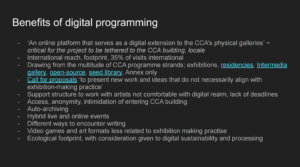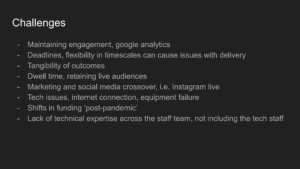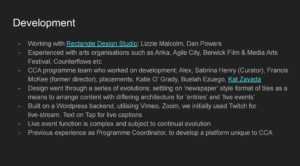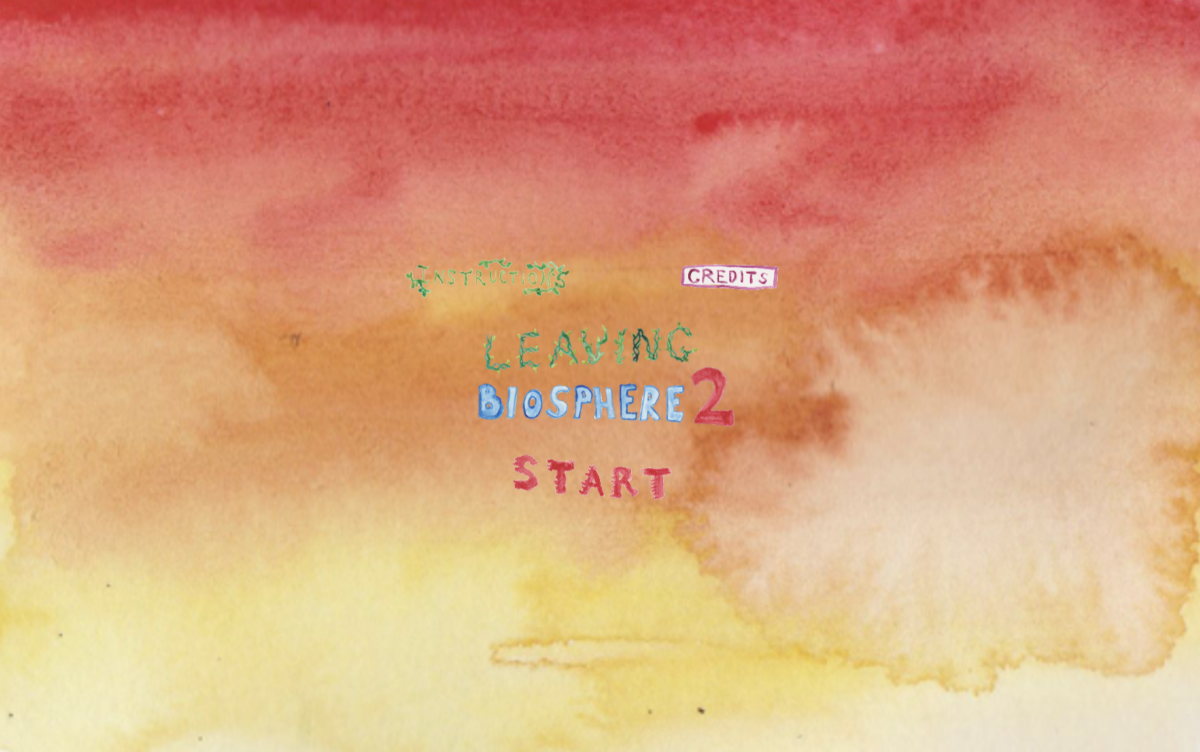In the field of contemporary art, digital curation not only challenges the traditional curatorial model but also opens up new ways of artistic expression and audience engagement. By attending Alex Misick’s fascinating presentation, I returned to my personal project Echoes in Blue: A Dialogue Across Generations, which aims to present the traditional art of blueprints through a digital platform to promote cross-generational cultural transmission and global dialogue.
The Transformative Power of Digital Curating
Digital curation has brought about fundamental changes in the way audiences engage with art exhibitions by extending their reach and interactivity (Misick, 2024). According to Gere (2002), digital technologies can break through the limitations of physical space and provide a richer art experience, and Parry (2010) has suggested that digital platforms can effectively support cross-cultural dialogue and the global dissemination of art. In the Echoes in Blue project, I am particularly interested in how augmented reality (AR) can be used to illustrate the production process and cultural stories of blueprint fabrics, allowing the audience to experience the details of the crafts in a visually intimate way (Bolter et al., 2006).


Misick, A. (2024) Digital Curation at CCA. [PPT] Presented at CCA.
Technological Challenges and Reflections
While digital technologies such as AR and VR have brought new means of display to art exhibitions, they also pose the challenge of maintaining audience engagement without sacrificing the physical sensory experience of the artwork. Locher and Dolese’s research suggests that an over-reliance on technology may diminish the physical perceptual qualities of the artwork. In response to this issue, I have designed the Echoes in Blue exhibition with a deliberate hybrid curatorial approach that aims to preserve the tactile and textural qualities of blueprint fabrics through a combination of physical displays and digital interactions, whilst utilizing digital tools to increase educational and interactive qualities. This strategy aims to overcome the limitations of traditional and modern display technologies to ensure that the sensory quality of the artworks and audience engagement can be balanced (Locher & Dolese, 2004). In addition, the use of virtual reality (VR) technology can provide audiences with an immersive art experience that deepens their understanding and appreciation of the cultural and historical context of the artwork (Kluszczynski, 2010).

Misick, A. (2024) Digital Curation at CCA. [PPT] Presented at CCA.
Integrating Digital Tools in Practice
Referring to Misick’s account of the CCA Annex project, I realized that mixed reality and virtual reality technologies can effectively bridge the gap between traditional art and modern audiences. According to Wahid et al.’s (2021) systematic literature review, they explored in detail how digital tools can be used to preserve and promote intangible cultural heritage in the Fourth Industrial Revolution. This research is instructive on how I can use digital technologies to promote the art of blueprints globally, specifically providing theoretical support on how these tools can be utilized to strengthen the cultural identity and understanding of the audience. The integration of AR and VR technologies has enabled audiences from different cultural backgrounds to understand and appreciate the cultural and historical dimensions of this traditional craft (Wahed, Saad, & Yusoff, 2021).
Future Directions
The CCA workshop enhanced my understanding of the potential of digital curation and strengthened my commitment to applying these technologies to my own curatorial projects. Through theoretical research and practical exploration, I am committed to making the Echoes in Blue project a showcase for the intersection of culture and technology.
Constructive responses to group projects
In the Domino Project group project, after two offline discussions, we also plan to adopt digital curatorial tools, Grau (2004) explored in detail how digital technology can transform artistic expression and audience experience, pointing out that virtual art is able to deepen the audience’s understanding and perception of artworks through the creation of immersive experiences. Our project plan uses the Instagram platform to create the #DominoProject hashtag to synchronise the exhibition, creating digital or virtual components that can be accessed remotely breaking down physical and spatial constraints to provide a continuous art experience for a global audience.
This curatorial practice not only demonstrates the dynamic nature of contemporary art, but also reflects how digital platforms make connectivity between individual exhibitions possible.
References
Misick, A. (2024). Digital Curation at CCA: Challenges and Innovations. [Lecture notes]. Retrieved from CCA.
Parry, R. (2010) Museums in a digital age. London: Routledge.
Locher, P. & Dolese, M. (2004) A Comparison of the Perceived Pictorial and Aesthetic Qualities of Original Paintings and Their Postcard Images. Empirical studies of the arts. [Online] 22 (2), 129–142.
Kluszczynski, R. (2010) Strategies of interactive art. Journal of aesthetics & culture. [Online] 2 (1), 5525-.
Gere, C. (2002). Digital Culture. London: Reaktion Books.
Bolter, J. D. et al. (2006) Windows and mirrors: interaction design, digital art and the myth of transparency. Information, communication, and society 9 (1) p.125–126.
Wahed, W. J. E. et al. (2021) “Please stay, don’t leave!”: A systematic literature review of safeguarding intangible cultural heritage in the fourth industrial revolution. Pertanika journal of social science & humanities. [Online] 29 (3), 1723–1744.


